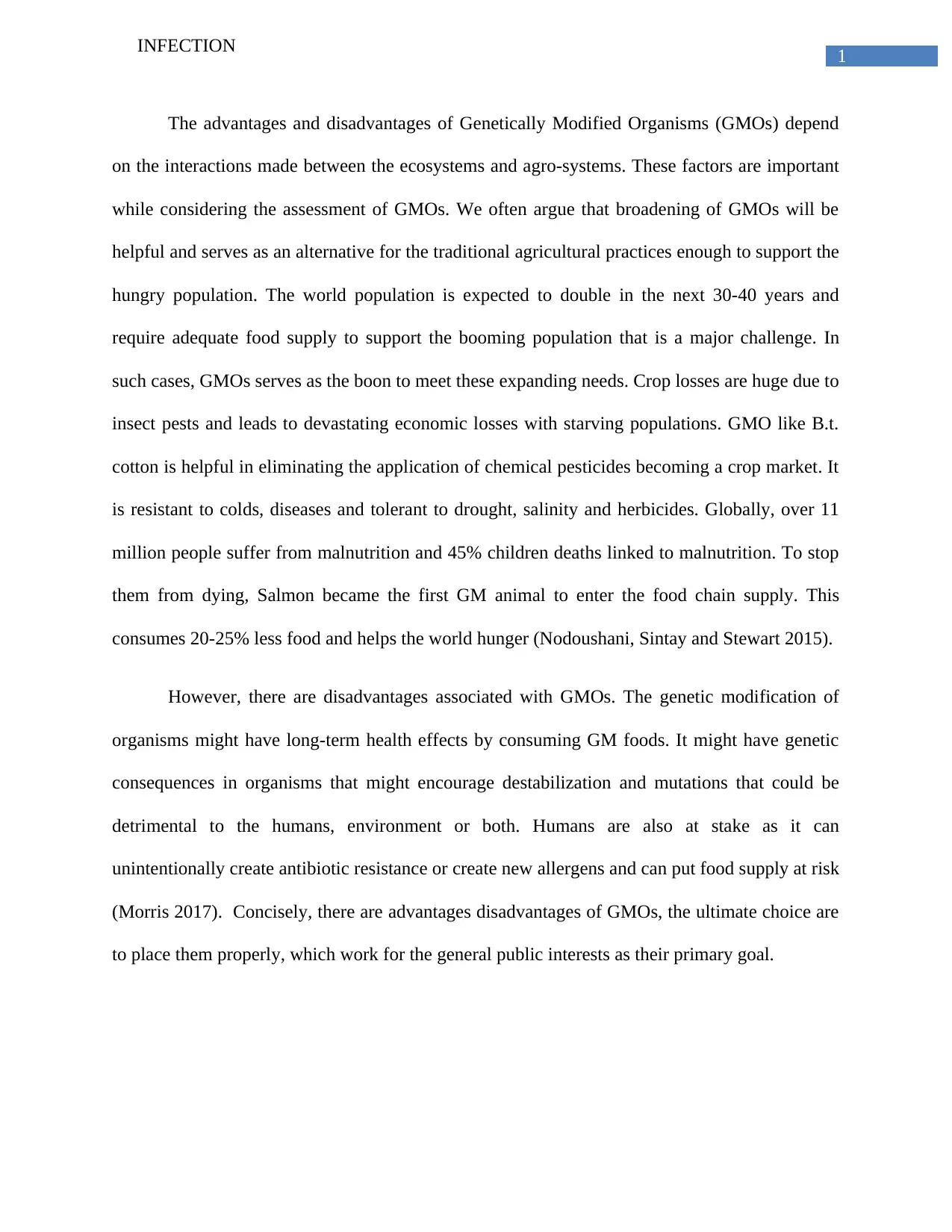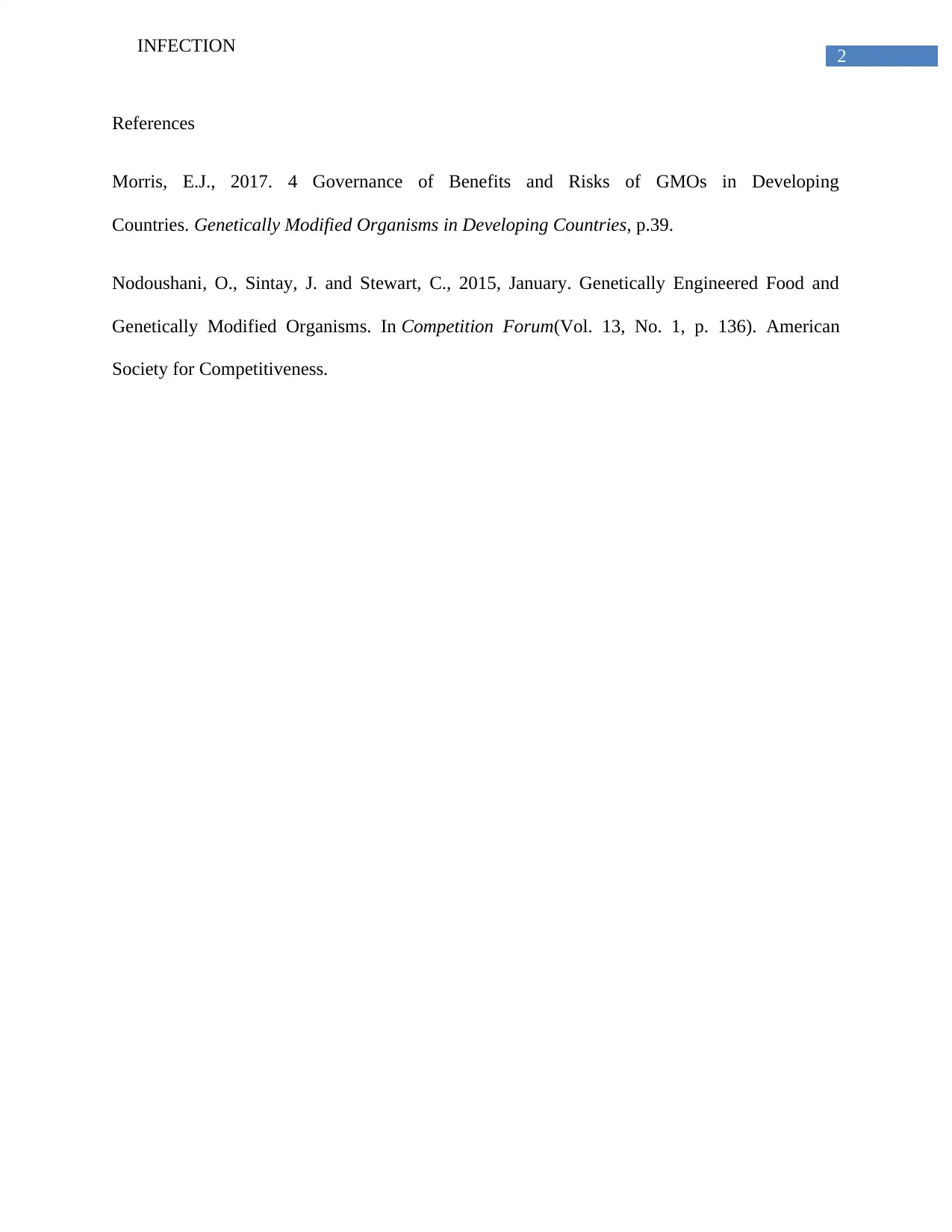GMOs: Advantages and Disadvantages of Genetically Modified Organisms
VerifiedAdded on 2020/03/04
|3
|410
|347
Report
AI Summary
This report examines the advantages and disadvantages of Genetically Modified Organisms (GMOs). It highlights the potential benefits, such as increased crop yields, reduced pesticide use, and the ability to address malnutrition by providing more nutritious food. The report also acknowledges the concerns surrounding GMOs, including potential health risks, the possibility of genetic mutations, and the impact on the environment. It references the work of Morris (2017) and Nodoushani, Sintay, and Stewart (2015) to support the arguments. The report concludes that while GMOs offer promise, careful consideration and responsible application are crucial to ensure they benefit society and the environment, prioritizing the public's best interest.
1 out of 3










![[object Object]](/_next/static/media/star-bottom.7253800d.svg)